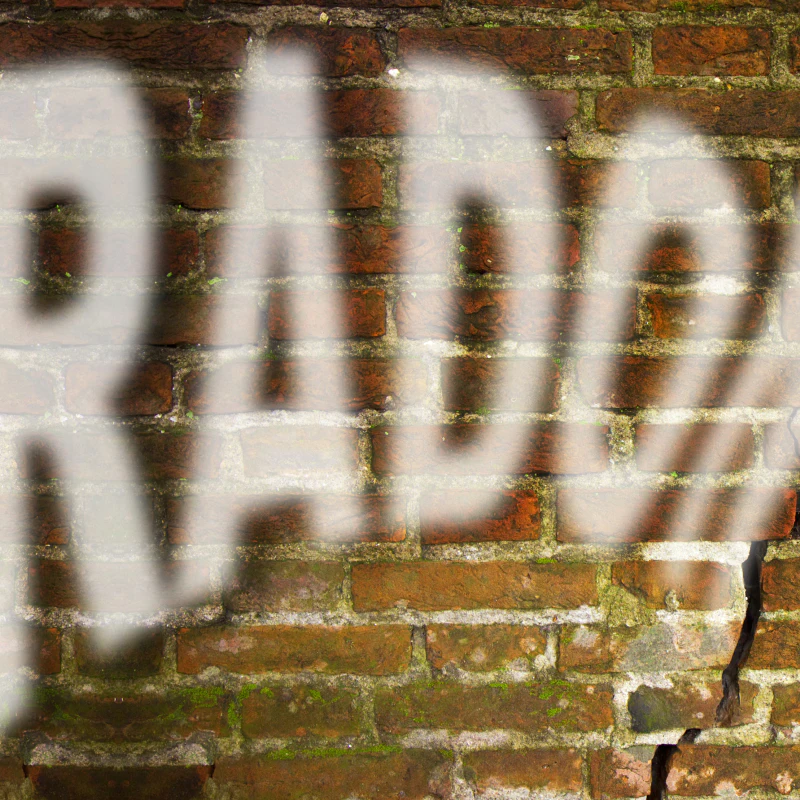Experienced Inspection Service at Your Fingertips
Radon
Why is radon a problem?
Exposure to radon gas (in high enough concentrations) can increase the risk of developing lung cancer. The E.P.A. says that radon gas causes 21,000 lung cancer deaths per year in the United States.
What should I do?
The E.P.A. says every home should be tested for radon gas. Make sure the testing device meets E.P.A. requirements, is E.P.A. listed, or is state certified. Testing protocols must be followed exactly or the results will not be valid. Nearly one out of 15 homes in the U.S. is estimated to have elevated radon levels.
What do the Radon air test results tell me?
If the test reading is below 4.0 pCi/L, no action is necessary. If the reading is above 4.0 pCi/L, corrective action is recommended. Usually, a radon sub-slab depressurization system is installed in the home. This consists of a small fan and piping which draws air from below the basement floor and vents it to the exterior of the house. The fan runs 24 hours a day, 365 days per year. It is a good idea to retest the radon level in the house after a mitigation system is installed to insure it is lowering the radon gas to a safe level.
I’ve heard that radon can also be in the water. Should I also test for radon in the water?
If the home’s radon-in-air level is higher than 4.0 pCi/L and the home’s water supply comes from a private well, test the water for radon. Homes on public water supplies are generally not affected by radon. Because most public water supplies come from reservoirs, any radon gas will generally be vented to the atmosphere and become part of the background levels. However, some public water supplies do come from well fields instead of reservoirs. Therefore readings above 300 pCi/L from public water supplies require action. However, in the State of Connecticut, the average of radon in private wells is estimated to be 3,000 pCi/L, and when the threshold of 5,000 pCiIL is reached, a radon-in-water reduction system is recommended. As a rule of thumb, there will be an increase of 1 pCi/L in the air inside a home for every 10,000 pCi/L of radon in household water.
How do I mitigate radon in the water?
There are methods for removing radon from the water. Generally, they cost between $2,000 to $4,000. Granulated Activated Carbon (GAC) systems can be used for lower levels of radon in water (5,000 to 10,000 pCi/L). Aeration systems are used for higher levels of radon in water (10,000 pCi/L or above). Both of these systems treat the water as it enters the house.
Is it true that some states do not have radon problems?
High radon levels have been found in every state. Radon problems do vary from area to area, but the only way to know the home.s radon level is to test. Radon levels also vary from home to home in the same area. A neighbor.s radon test result has no bearing on the radon level in your home. Each home should be tested.
Other Radon Factors
- A number of other factors affect radon levels in the house.
- Radon levels are from 0.5 times to 7 times higher in the winter compared to summer. Radon levels averaged 1.8 times higher in the winter compared to the summer.
- Ideally, it would be better to use the results of a long-term radon measuring device or average short-term test results from 4 seasons to get a more accurate average radon level. Generally, this is not practical for real estate transactions.
- The ”tightness” of the home.s construction affects radon levels in the home. ”Tight” homes have radon levels twice as high as average homes and three times as high as drafty homes. Home built since 1980 tend to be tight. Average homes were generally built between 1960 and 1980. Drafty homes were generally built prior to 1960.
- What kind of rock is in the area of the home also affects radon levels. Radon levels were, on average, twice as high in areas that had granite rock compared to non-granite rock.
Radon Risk If You Smoke
Radon Level
If 1,000 people who smoked were exposed to this level over a lifetime…
The risk of cancer from radon exposure compares to…
What to do:
Stop smoking and…
20 pCi/L
About 135 people could get lung cancer
100 times the risk of drowning
Fix your home
10 pCi/L
About 71 people could get lung cancer
100 times the risk of dying in a home fire
8 pCi/L
About 57 people could get lung cancer
4 pCi/L
About 29 people could get lung cancer
100 times the risk of dying in an airplane crash
2 pCi/L
About 15 people could get lung cancer
2 times the risk of dying in a car crash
Consider fixing between 2 and 4 pCi/L
1.3 pCi/L
About 9 people could get lung cancer
(Average indoor radon level)
(Reducing radon levels below 2 pCi/L is difficult)
0.4 pCi/L
About 3 people could get lung cancer
(Average outdoor radon level)
Radon Risk If You Have Never Smoked
Radon Level
If 1,000 people who never smoked were exposed to this level over a lifetime…
The risk of cancer from radon exposure compares to…
What to do:
20 pCi/L
About 8 people could get lung cancer
The risk of being killed in a violent crime
Fix your home
10 pCi/L
About 4 people could get lung cancer
8 pCi/L
About 3 people could get lung cancer
10 times the risk of dying in an airplane crash
4 pCi/L
About 2 people could get lung cancer
The risk of drowning
2 pCi/L
About 1 person could get lung cancer
The risk of dying in a home fire
Consider fixing between 2 and 4 pCi/L
1.3 pCi/L
Less than 1 person could get lung cancer
(Average indoor radon level)
(Reducing radon levels below 2 pCi/L is difficult)
0.4 pCi/L
(Average outdoor radon level)
How to Help a Seller Get Through It
Testing for radon during the summer months is, at a minimum, an inconvenience to home sellers. With doors and windows closed it is also uncomfortable.
You can help ease their strain by instructing them in the proper protocols to be met for the test procedure or just make a copy of this letter and give it to them.
During a real estate transaction, the only practical test for radon gas is “short-term” test devices. In the case of the E-Perm or Electronic Monitor method that RES-I-TEC uses, this means 48-hour minimum to seven days maximum. (This is the same for most other test devices).
In order to conduct the two-day test, which is the most convenient for home sellers, certain EPA protocols must be met:
- All doors and windows must be closed 12 hours prior to the placement of the testing device (this means all doors and windows from the basement to the attic). These closed house conditions must be maintained during the entire testing period, other than normal exit and entry.
- If a radon reduction system is in place, this must be turned on 24 hours prior to the test.
- The use of central air conditioning systems is acceptable unless the air conditioning system circulates fresh air from the exterior (this is rare in residential homes)
- The use of window air conditioning units is acceptable as long as they are run in a closed-vent position. (No exterior air circulation)
- The use of large exhaust fans such as a “whole house fan” is prohibited. Small exhaust fans such as in the kitchen and baths that run for short periods are acceptable.
- Do not tamper with the device.
These screening test protocols are not RES-I-TEC’s, but the EPA’s requirements for radon testing. By maintaining the proper protocols, you put the home seller through the least amount of inconvenience and saves time. This helps the seller, buyer, real estate agent, and all others involved in the transaction.
GET IN TOUCH
If you’re ready to get fantastic service, then call us today or fill out the form.




